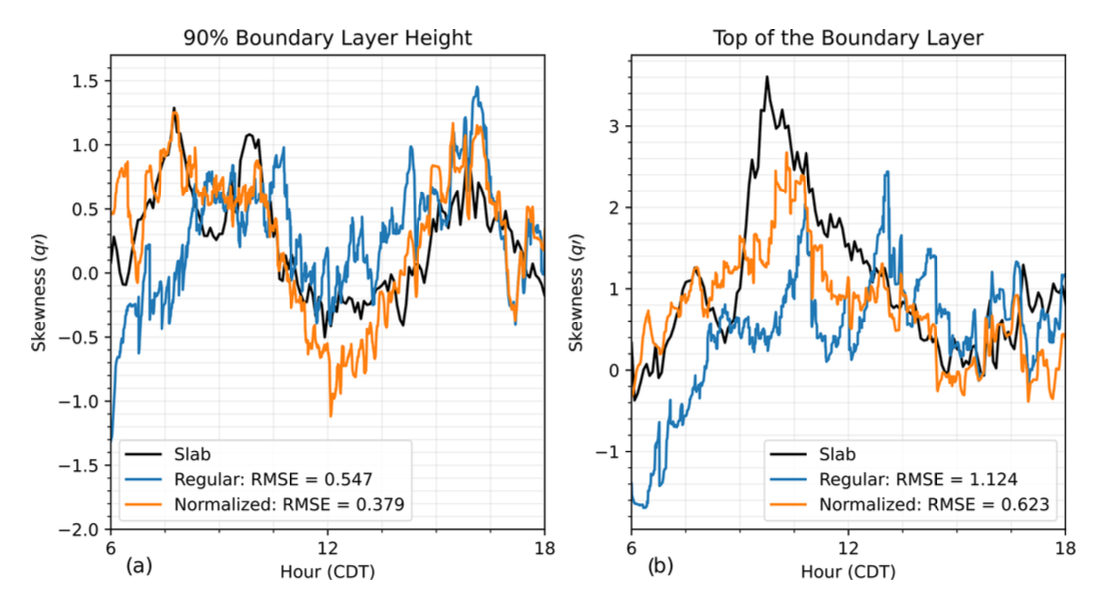Improving Estimates of Higher-Order Moments from Lidar Observations at the Boundary Layer Top
Submitter
Turner, David D.
— NOAA Global Systems Laboratory
Wagner, Timothy — University of Wisconsin–Madison
Area of Research
Atmospheric Thermodynamics and Vertical Structures
Journal Reference
Rosenberger T, D Turner, T Heus, G Raghunathan, T Wagner, and J Simonson. 2024. "Improving the estimate of higher-order moments from lidar observations near the top of the convective boundary layer." Atmospheric Measurement Techniques, 17(22), 10.5194/amt-17-6595-2024.
Science

Line plot comparison of q skewness (unitless) at 90% of the height of the boundary layer (a) and at the top of the boundary layer (b) for the three computation methods, i.e., slab mean (black; "truth"), regular height grid (blue), and normalized height grid (orange), along with their respective root-mean-square error with respect to the slab mean value results. The new method using the normalized height method is in better agreement with the truth.
This work demonstrates a new technique for estimating higher-order statistics (e.g., variance, skewness, covariance) from high-temporal-resolution ground-based lidar data, where the data is normalized to the height of the convective boundary layer (CBL) before the statistics are computed.
Impact
Higher-order moments are used to describe turbulence in the CBL, which is critical to understanding the development of boundary layer clouds and thunderstorms and their representation in numerical models. Our technique extends time periods over which these statistics can be derived to times when the CBL is rapidly changing (e.g., the hours following sunrise), and improves the accuracy of these statistics.
Summary
Higher-order moments, such as the variance and skewness of a scalar, as well as covariances between two geophysical variables (e.g., water vapor and vertical motion), are used to describe the turbulence in the CBL statistically. These statistics can be derived from high-temporal-resolution lidar data, but they have a high uncertainty near the CBL top when the depth of the CBL is changing during the analysis period. This work presents a new approach where the derivation is performed on a height grid that is normalized by the depth of the CBL, which allows for a better representation of higher-order moments at the top of the CBL. To test this approach, we utilized large-eddy simulations of the CBL centered over the Southern Great Plains (SGP) site. Model output shows that deriving higher-order moments from time series on a normalized height grid has better agreement with the domain-averaged values than the moments derived from the original height grid. The approach could be used to evaluate similarity relationships that relate vertical gradients and mean profiles to turbulent moments, which form the basis of turbulent parameterizations used in numerical models.
Keep up with the Atmospheric Observer
Updates on ARM news, events, and opportunities delivered to your inbox
ARM User Profile
ARM welcomes users from all institutions and nations. A free ARM user account is needed to access ARM data.


















